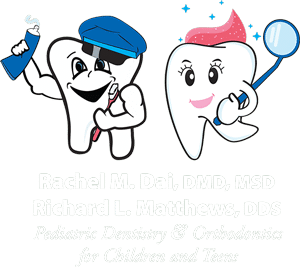The Buzz on Legacy Orthodontics
Table of ContentsGet This Report about Legacy OrthodonticsThe smart Trick of Legacy Orthodontics That Nobody is Talking AboutGetting The Legacy Orthodontics To WorkGetting My Legacy Orthodontics To WorkLittle Known Facts About Legacy Orthodontics.
In addition, we offer flexible treatment schedules, flexible settlement choices and a fun, pleasurable experience.An orthodontist is a dental practitioner educated to identify, avoid, and treat teeth and jaw irregularities. Orthodontists work with individuals of all ages, from kids to adults.
Malocclusion, or misaligned teeth, can cause dental problems, including dental caries, periodontal disease, and hard or unpleasant eating. But not every person is born with straight teeth. If you have a negative bite or large areas in between your teeth, you may intend to consult a dental practitioner focusing on orthodontic treatment.
All About Legacy Orthodontics
( Image Debt: DigitalVision/Getty Images) Orthodontists use dealt with and detachable oral tools, like braces, retainers, and bands, to change the position of teeth in your mouth. Orthodontic treatment is for dental irregularities, consisting of: Crooked teethBite troubles, like an overbite or an underbiteCrowded teeth or teeth that are too far apartJaw misalignmentThe objective of orthodontic treatment is to enhance your bite.
A healthy and balanced bite ensures you can eat, eat, and talk correctly. While you could consider orthodontists as primarily for kids or teenagers who need dental braces, they can correct dental troubles at any age. Orthodontists attend college, dental school, and orthodontic institution. After college graduation, they invest 2 or 3 years in an orthodontic residency program.
All orthodontists are dental experts, yet not all dental professionals are orthodontists. Orthodontic residency programs supply intensive, focused instruction for dental professionals. They concentrate on 2 areas: How to correctly and safely move teeth Exactly how to properly direct development in the teeth, jaw, and faceOnce an orthodontist has finished training, they have the choice to end up being board accredited.
Things about Legacy Orthodontics
Misalignment, or malocclusion, is one of the most common reason individuals see an orthodontist. It is genetic and is the result of size differences in between the upper and lower jaw or in between the jaw and teeth. Malocclusion causes tooth overcrowding, a misshapen jaw, or uneven bite patterns. Malocclusion is typically treated with: Your orthodontist affixes metal, ceramic, or plastic square bonds to your teeth.
If you have just small malocclusion, you may have the ability to make use of clear braces, called aligners, as opposed to standard dental braces (https://www.mixcloud.com/legacyortho1/). Some individuals need a headgear to help relocate teeth right into line with pressure from outside the mouth. After dental braces or aligners, you'll require to wear a retainer. A retainer is a custom-made tool that keeps your teeth in area.
They're most frequently made use of on youngsters. They can develop extra room in the mouth without needing to pull teeth. If you have a major underbite or overbite, you could need orthognathic surgery (likewise called orthodontic surgical treatment) to extend or shorten your jaw. Orthodontists use cords, medical screws, or plates to support your jaw bone.
You might need to see an orthodontist if you have: Crowding or otherwise adequate area for every one of your teethOverbite, when your upper teeth come over your bottom teethUnderbite, when your bottom teeth are too far forwardSpacing or problems with gapsCrossbite, which is when your top teeth fit behind your base teeth when your mouth is closedOpen bite or a vertical gap in between your front base and top teethMisplaced midline, when the facility of your bottom and upper teeth don't line up Fixing a this page dental malocclusion can: Make attacking, eating, and speaking easierImprove the symmetry of our face and your general appearanceEase pain from temporomandibular joint conditionsSeparate your teeth and make them less complicated to cleanse, helping prevent tooth decay or tooth cavities It's often a dental practitioner that initially notifications misaligned teeth throughout a regular examination.
Not known Factual Statements About Legacy Orthodontics

During your first orthodontic appointment, you'll likely have: A dental examPhotos taken of your face and smileDental X-raysPanoramic (360 level) X-rays of your face and headImpressions to create mold and mildews of your teethThese examinations will certainly help your orthodontist know exactly how to continue with your therapy. leesburg orthodontics. An orthodontist is a dental expert who's had training to treat your teeth and jaw
Orthodontists may carry out surgical treatment, exams,X-rays,and even more to help you attain a more comfortable, much healthier smile. An orthodontist is focused on your bite, so something like a broken tooth would be dealt with by a dental professional. Orthodontists are dental professionals however not all dental professionals are orthodontists. Orthodontists are concentrated on your bite, or the method your teeth fit together, and the straightness of your teeth.
Ever questioned exactly how celebs always seem to have perfectly aligned teeth? The answer often hinges on the skilled hands of an orthodontist. What precisely does an orthodontist do? Orthodontists are dental specialists who focus on dealing with irregularities in the teeth and jaws. Their expertise goes beyond simply creating an attractive smile; it includes boosting your general dental health and wellness and feature.
Facts About Legacy Orthodontics Revealed

, orthodontists have a varied toolkit at their disposal. These reliable dental braces use a system of brackets bonded to the teeth and linked by cords.
Clear aligners, like Invisalign, are a prominent alternative for patients looking for a more discreet therapy choice. These detachable trays are tailor-made to progressively shift the teeth's position. Headgear might be used along with dental braces or aligners to use additional targeted forces, especially for remedying jaw disparities. In instances of narrow jaws, palatal expanders can be utilized to create area for appropriate tooth alignment.